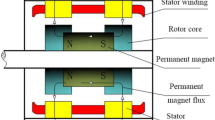Abstract
Although a wide range of Internet telephony applications such as VocalTec's Internet Phone and Microsoft's NetMeeting has been developed to support real-time voice communication over the Internet, they are predominantly written for the Windows 95/NT platform and are not compatible with other operating systems. Moreover, most of the Internet telephony software is operated as stand-alone applications and must be downloaded and installed prior to operation. This has caused great inconvenience in using Internet telephony software. To resolve this, a web-based Internet Java Phone (or IJPhone) which can be downloaded from the Internet and run from standard Java-compliant web browser, is proposed in this paper. The IJPhone system consists of two main components: the Web-based Telephone Exchange for user connection and Internet Java Phone Applet for establishing real-time Internet voice communication. In addition, as Java applets have certain security restrictions placed on them, the paper also discusses the method proposed to overcome them.
Similar content being viewed by others
References
Bolot, J.C. and A. Vega-Garcia (1996), “A Control Mechanism for Packet Audio in the Internet,” In Proceedings of the Conference on Computer Communications (IEEE Infocom), San Francisco, CA, pp. 232–239.
Busse, J., D. Deffner and H. Schulzrinne (1996), “Dynamic QoS Control of Multimedia Applications Based on RTP,” Computer Communications 19, 49–58.
Chin, K.V., S.C. Hui and S. Foo (1998), “Enhancing the Quality of Internet Voice Communication for Internet Telephony Systems,” Journal of Network and Computer Applications 21, 203–218.
Claypool, M. and J. Riedl (1994), “Silence Is Golden? – The Effects of Silence Deletion on the CPU Load of an Audio Conference,” In Proceedings of the International Conference on Multimedia Computing and Systems, May 14–19, Boston, USA.
Corner, D.E. (1995), Internetworking with TCP/IP, Vol. 1, Prentice-Hall, Englewood Cliffs, NJ.
Dougherty, D. (1997), “Understanding Java Servlets,” http://webreview.com/wr/pub/97/10/10/feature/colton.html.
Felten, E. and G. McGraw (1997), “Understanding the Keys to Java Security – the Sandbox and Authentication,” http://www.javaworld.com/javaworld/jw-05-1997/jw-05-security.html.
Foo, S., S.C. Hui, S.W. Yip and He, Y. (1997), “Approaches for Resolving Dynamic IP Addressing,” Internet Research 7, 3, 213–221.
Gevros, P., A. Kapetanaki, L. Liu, E. Waizel and B. Wong (1996), “Java Audio Tool,” Department of Computer Science, University College London, http://www.cs.ucl.ac.uk/staff/P.Gevros/jat.html.
CodeSigning.shtml.
Hardman, V., M.A. Sasse, M. Handley and A. Watson (1995), “Reliable Audio for Use over the Internet,” In Proceedings of the INET95, Ohahu, Hawaii.
ITU (1996), “Visual Telephone Systems and Equipment for Local Area Networks which Provide a Non-guaranteed Quality of Service,” ITU-T Recommendation H.323.
Kaufman, S., J. Perkins and D. Fleet (1996), Teach Yourself ActiveX Programming in 21 Days, Sams.Net Publishing, Indianapolis, Indiana.
Moss, K. (1998), Java Servlets, McGraw-Hill, New York.
Netscape Corporation (1997), “Introduction to the Capabilities Classes,” http://developer.netscape.com./docs/manuals/signedobj/capabilities/index.html.
Microsoft Corporation (1999), “NetMeeting,” http://www.microsoft.com/windows/netmeeting/.
Rosenberg, J. (1996), “Reliable Enhancements to NeVoT,” http://www.cs.columbia.edu/jdrosen/aisfinal/aisindex.html.
Schulzrinne, H. (1992), “Voice Communication Across the Internet: A Network Voice Terminal,” ftp://gaia.cs.umass.edu/pub/hgschulz/nevot/.
Sun Microsystems Inc. (1998), “Java Media Framework API Guide v0.8,” http://java.sun.com/products/java-media/jmf/index.html.
Sun Microsystems Inc. (1999), “Applets,” http://java.sun.com/applets.
Verisign Inc. (1999) “Verisign,” http://www.verisign.com/.
VocalTec Communications (1999), “VocalTec Internet Phone,” http://www.vocaltec.com/.
Voxware Inc. (1999), “VoxPhone,” http://www.voxware.com/.
Yahoo! Inc. (1999), “Yahoo! Voice Chat,” http://chat.yahoo.com/.
Rights and permissions
About this article
Cite this article
Phua, K.M., Hui, S.C. & Yeo, C.K. A web-based Internet Java Phone for real-time voice communication. World Wide Web 3, 193–203 (2000). https://doi.org/10.1023/A:1019298100614
Issue Date:
DOI: https://doi.org/10.1023/A:1019298100614




